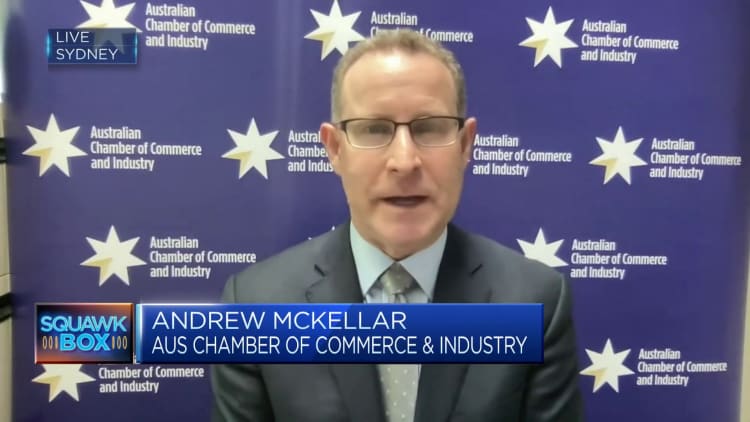Sydney city skyline, New South Wales, Australia.
Educational Images | Universal Image Group | Getty Images
The head of the Reserve Bank of Australia pledged on Wednesday to do whatever is necessary to bring inflation back to target, warning of rising inflation risks and households bracing for pain ahead.
Reserve Bank of Australia Governor Philip Lowe told lawmakers that inflation expectations were well anchored for now, but that this could not be taken for granted and that entrenched inflation would lead to higher interest rates and unemployment.
The RBA expects headline inflation to return to the top of the bank’s target of 2%-3% by mid-2025, slower than in many other economies as Lowe’s looks to keep labor market growth strong.
“Mid-2025 is pressing for the length of time we can reasonably spend, because if we take longer than that, people might reasonably say: ‘Are you serious about inflation targeting?’ I want to assure you that we Seriously,” Lowe said.
“The risk to inflation is to the upside and we need to be mindful of that.”
If productivity growth fails to pick up, service price inflation is likely to remain high due to high unit labor costs, Lowe warned, adding that slowing household spending and uncertainties in the global economy were also present.

Since last May, the RBA has raised interest rates by 375 basis points to an 11-year high of 3.85%. It warned that more rate hikes may be needed to bring inflation back to target.
Success in the fight against inflation was no guarantee and Australian households “will remain miserable for some time to come”, Lowe said.
“We will not declare victory until we have achieved victory.”
The market expects the RBA to keep rates unchanged next month, but there is a high chance of another 25 basis point rate hike in August or September, and rates are expected to remain high for the rest of the year.
Economic data has been soft for the past month. Retail sales were flat in April as consumers cut back on food and dining out, while wages rose less than expected on a quarterly basis, showing signs of cooling in the red-hot labor market.


